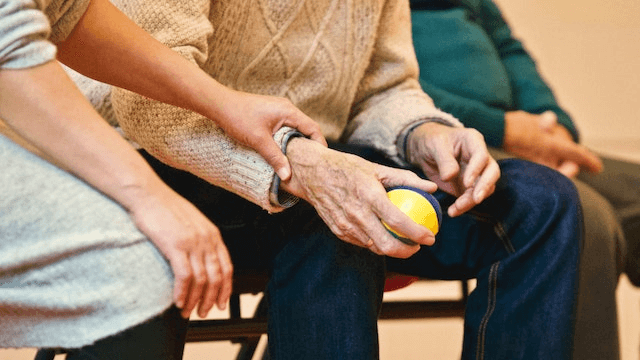A look at World Parkinson’s Day
World Parkinson’s Day 2023 takes place on 11 April.

In this article, we’re going to take a look at Parkinson’s disease in Australia, which currently affects more than 100,000 people.
We’ll also discover what support exists for those living with it and their family and carers.
About World Parkinson’s Day
The day is held on 11 April every year as part of Parkinson’s Awareness Month. The aim of both the day and month is to raise awareness of the disease.
The day and month are all about providing opportunities to learn more about the disease, the issues experienced by people living with it and how their lives can be improved through support groups, communities and other means.
People can take part in lots of different activities to achieve these goals, including:
- Raising funds for research into Parkinson’s disease through sponsored fitness or other challenges
- Attending online or in-person events to find out more about the disease
- Organising awareness sessions at work or in their community
- Volunteering with Parkinson’s-related charities
- Spreading the word on social media networks
What is Parkinson’s disease?
Parkinson’s disease is a progressive neurological condition. This means that it gets worse over time.
The average age at diagnosis is 65, although younger people can develop Parkinson’s disease too. This is called young-onset Parkinson’s.
It occurs because the brain can’t produce enough of the hormone dopamine to allow the proper control of movement, though we still don’t know why this happens in certain people.
The main symptoms of Parkinson’s disease are:
- Tremor (shaking movements)
- Slow movements
- Muscle rigidity
- Impaired coordination and balance
Other symptoms include:
- Difficulty speaking, chewing and swallowing
- Depression
- Memory issues
- Problems with urination or constipation
- Skin issues
Diagnosing Parkinson’s can be difficult as there are no specific lab tests like blood tests or scans for it.
Instead, a neurologist makes a diagnosis after examining a patient’s symptoms and history.
There’s no cure for Parkinson’s disease, but treatments are available to relieve symptoms and help people live life fully. These include:
- Medication to increase the level of dopamine in the brain. Levodopa is commonly used.
- Other medication to help with tremors and abnormal movements.
- Deep brain stimulation surgery to reduce tremors and abnormal movements. This involves putting electrodes into the area of the brain that is responsible for movement.
- Following a healthy diet that includes consuming plenty of fibre and water to help with gastrointestinal symptoms.
- Exercising to help with strength and balance.
What support is available for people living with Parkinson’s?

If you or a loved one are living with Parkinson’s disease, lots of support is available. This includes:
- Peer support groups, which offer the chance to share information, find out about new developments in treatment and discuss your experiences
- Health events and seminars that can put you in touch with healthcare professionals who specialise in Parkinson’s and offer you information on treatment and living with the disease
- Your GP, whom you can talk to about receiving physiotherapy, occupational therapy and speech and language therapy to help with some of the symptoms
- Your GP can also put you in touch with a specialist counsellor or psychologist to talk through how it has affected you emotionally
The Parkinson’s Australia info line can signpost you to more types of support.
You may also find wearing a medic alert that details your condition useful. A medical alert is a bracelet, necklace or other portable item that has space to write or print any combination of:
- The name of your condition.
- Details of your medication.
- Contact info of loved ones.
You may wish to choose a pre-printed Parkinson’s disease medical ID, or you could opt for a plain wristband that allows you to add details yourself.
The idea is that if you have a health emergency, med alerts and IDs can give vital information to those attending to you, ensuring that you receive appropriate care.
There are alternatives to bracelets, too — you could opt for a necklace or a wallet card instead.
Show your support for World Parkinson’s Day
Without a doubt, Parkinson’s is a serious condition that impacts the lives of those who have it and their nearest and dearest.
But there are lots of things you can do this World Parkinson’s Day to help raise awareness and find out more about the disease.
If you’re interested in getting a medical ID for yourself or a loved one living with Parkinson’s, be sure to check out our online shop.
We have many ideas for wristbands, necklaces and other ID items suitable for people with Parkinson’s disease.
Just by purchasing one of our medic alerts, you can do your bit to support this World Parkinson’s Day on 11 April…so take a look at our range without delay!

